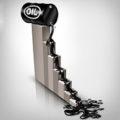The price of oil has been climbing quite quickly since OPEC announced that its members reached a deal last week to cut oil production. Russia has joined OPEC and it will cut production by 300,000 barrels per day as well. Nevertheless, as soon as WTI prices climbed above the $52 USD mark, they started to decline. WTI lost 1.2% of its value yesterday. This shows that the OPEC deal will not boost oil prices as much as its members need to balance their budgets and pay some of their debt down.
Why didn’t the Price of Oil Reach $60 USD After the Deal?
OPEC deal or not, no one can put the shale revolution genie back in the bottle. It is clear that even with the deal and with cooperation from important non-OPEC members such as Russia, oil prices will stay way below their 2014 prices. North American capacity doesn’t stop at shale either. Canada holds some of the world’s largest oil resources in the world. If the prices go up to the $60 USD per barrel mark, all that Canadian oil that is so expensive to take to market, will begin flooding refineries at a higher rate. If oil can sustain its price above $50 USD per barrel, shale will quickly kick in, and in the mid to long term, with the help of a pipeline perhaps – political conditions may now be ripe – Canadian oil will start flowing towards refineries in the Gulf of Mexico at much more attractive prices.
OPEC Members are in Debt
Another variable to take into account is the amount of debt that GCC countries and other OPEC members re running. To balance their budgets, many of these countries need oil to be at a price above $70 USD per barrel. Their economies also suffer from Dutch Disease. Turning the direction of a nation’s economy on a dime, is nearly impossible, so even these countries, which agreed to the production cuts, might quickly try to cheat and pump more when prices reach a certain level.
No Long Term Change despite the OPEC Deal
All these variables weigh against the long term success of the OPEC production cut. Oil prices might recover for a while, but investors should not be too bullish. In the end the only real factor that can bring prices back up and have them stay at higher levels, is demand. No one is expecting demand to grow enough over the next few years to buoy oil prices back into the price range necessary for OPEC members to balance their budgets, taking away the incentive to cheat. The glut on the supply side will remain for some years to come.







